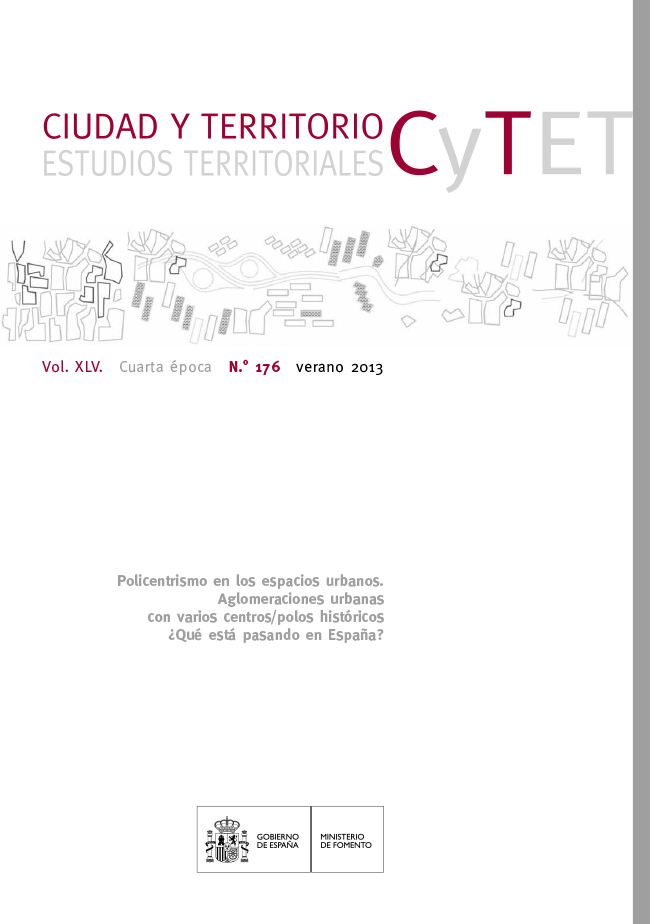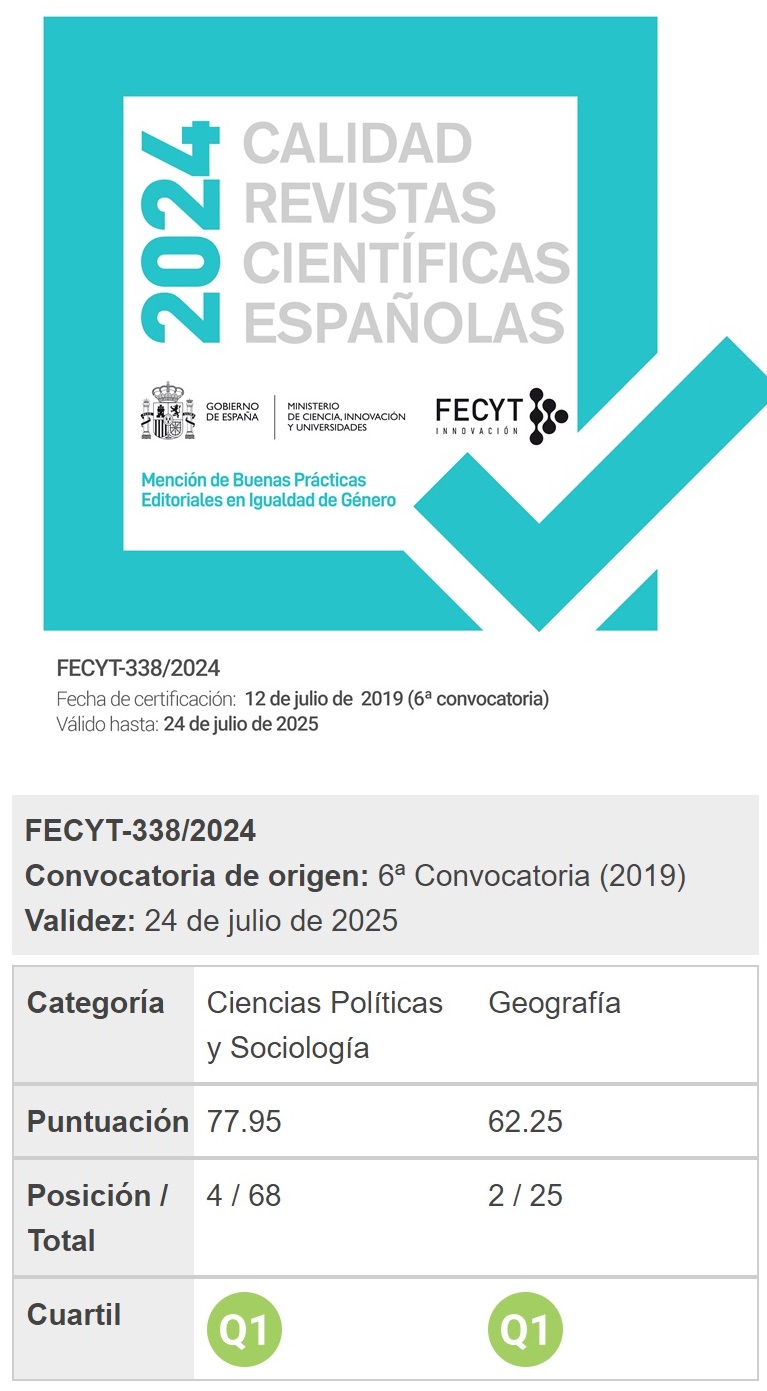Aglomeraciones/regiones urbanas basadas en varios centros: el policentrismo
Palabras clave:
Policentrismo, regiones metropolitanasResumen
El sistema de ciudades en red, policéntrico, se ha propuesto desde finales
del siglo xx en Europa como una de las bases de su futuro desarrollo. El artículo considera
«Policentrismo» algo más que la acepción intuitiva de la presencia de varios
centros en un sistema difundido de asentamientos, debiendo existir interdependencias
relevantes entre ellos junto con una capacidad de influencia en su entorno y de
autonomía respecto a los centros principales. En él se realiza una revisión bibliográfica
sobre los métodos de detección de policentrismo, distinguiendo entre las distintas
tendencias, la morfológica y la funcional, deteniéndose en entenderlas y criticarlas
y detectando que han sido pocos los intentos de estudiarlo utilizando ambas
metodologías a la vez. Se indaga en las necesidades de considerar no solo la población
y los flujos residencia-trabajo como únicos indicadores de policentrismo y en que
nuestro país no se ha quedado al margen de discutir y aplicar métodos para su detección,
pudiéndose decir que, en relación a los países vecinos, ha hecho importantes
contribuciones. Por último, se sintetizan los criterios/procesos que están dando lugar
al policentrismo y las formas que adopta.
Descargas
Descargas
Publicado
Cómo citar
Número
Sección
Licencia
Derechos de autor 2013 José M. De Ureña, Félix Pillet, Carlos Marmolejo

Esta obra está bajo una licencia internacional Creative Commons Atribución-NoComercial-SinDerivadas 4.0.
Sin perjuicio de lo dispuesto en la legislación vigente sobre Propiedad Intelectual, y conforme a la misma, el/la los/las autor/a/es/as que publiquen en CyTET cede/n a título gratuito, de modo no exclusivo y sin límite temporal al Ministerio de Transportes, Movilidad y Agenda Urbana los derechos para difundir, reproducir, comunicar y distribuir en cualquier formato actual o futuro, en papel o electrónico, la versión original o derivada de su obra bajo licencia de Creative Commons Reconocimiento-NoComercial-SinObraDerivada 4.0 Internacional (CC BY-NC-ND 4.0), así como para incluir o ceder a terceros la inclusión de su contenido en índices, repositorios y bases de datos nacionales e internacionales, con referencia y reconocimiento en todo caso de la autoría del mismo.
Además, al realizar el envío, el/la los/las autor/a/es/as declara/n que se trata de un trabajo original en el que se reconocen las fuentes que han sido utilizadas en su estudio, comprometiéndose a respetar la evidencia científica y a no modificar los datos originales para verificar o refutar una hipótesis de partida; que el contenido esencial del mismo no ha sido publicado previamente ni se publicará en ninguna otra obra o revista mientras esté en proceso de evaluación en la revista CyTET; y que no se ha remitido simultáneamente a otra publicación.
Los autores deben firmar un Formulario de Cesión de Derechos, que les será enviado desde la Secretaría de CyTET una vez se acepte su artículo para ser publicado.
Con el objetivo de favorecer la difusión del conocimiento, CyTET se adhiere al movimiento de revistas de Open Access (OA) y entrega la totalidad de sus contenidos a diversos índices, repositorios y bases de datos nacionales e internacionales bajo este protocolo; por tanto, la remisión de un trabajo para ser publicado en la revista presupone la aceptación explícita por parte del autor/a de este método de distribución.
Se anima a las/os autoras/es a reproducir y alojar sus trabajos publicados en CyTET en repositorios institucionales, páginas web, etc. con la intención de contribuir a la mejora de la transferencia del conocimiento y de la citación de dichos trabajos.








 Enlace a CyTET en Linkedin
Enlace a CyTET en Linkedin